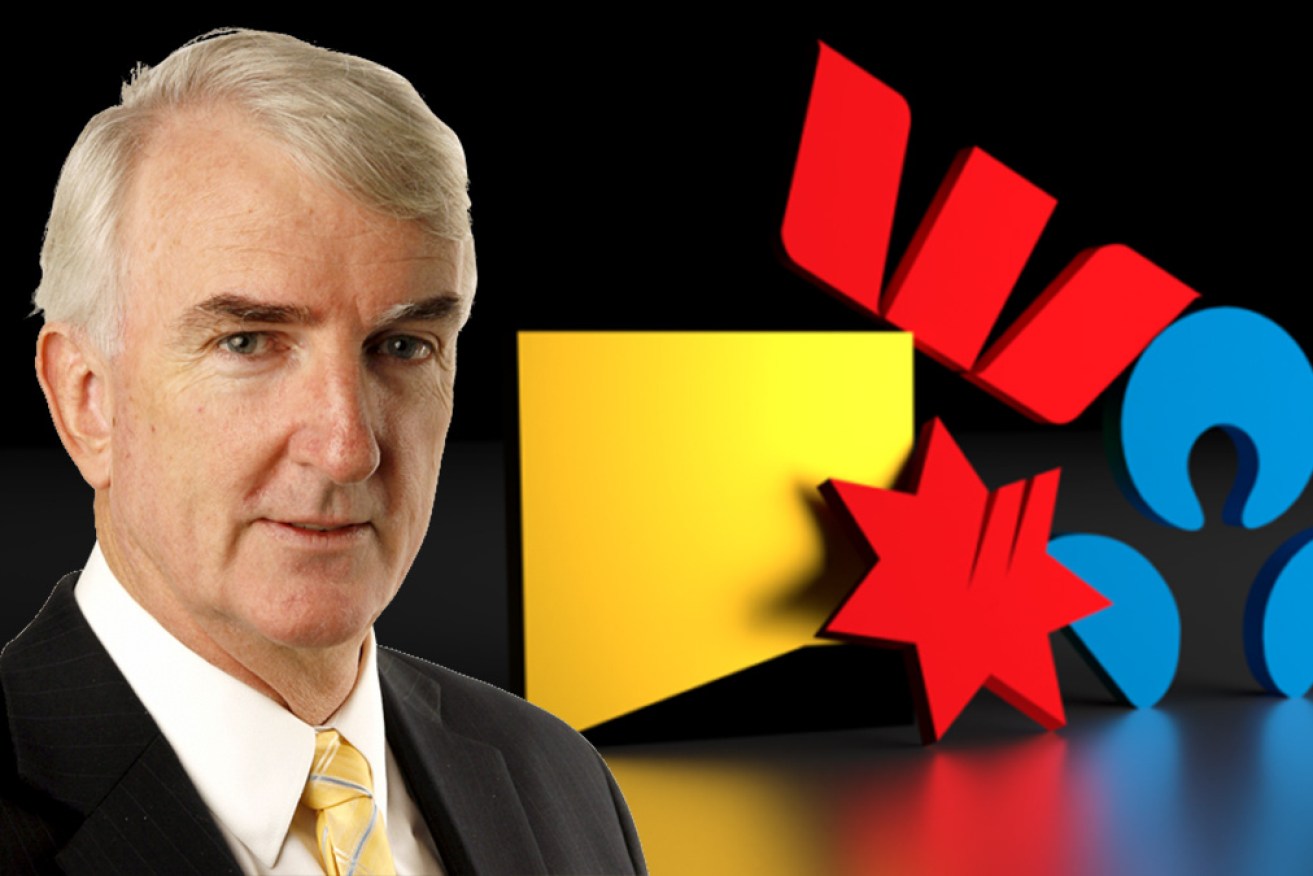Liberal and Labor leadership lying about bank interest rates


Michael Pascoe thinks RBA cuts should not be passed on – and our leaders know it.
These are dismal days for Australian politics on a number of fronts.
A quick example is that the Prime Minister, Treasurer, Opposition Leader and Shadow Treasurer apparently have no idea of how the Australian financial system works – or are happy to routinely mislead and lie.
As predictable as stories about Christmas “killer toys”, the pollies fell over themselves to declare the banks should pass on the latest Reserve Bank’s interest rate cuts in full.
“They never learn. They honestly never learn and it’s disappointing,” said Prime Minister Scott Morrison, indicating either he’s never known, or worse.
The banks were putting profits before customers, former banker Josh Frydenberg proclaimed, faking outrage.

Scott Morrison and Josh Frydenberg expressed outrage at the banks’ failure to pass on the cuts – but Michael Pascoe wonders if it was genuine. Photo: AAP
The government shouldn’t let the banks get away with it, rabbitted Anthony Albanese, the way opposition leaders do, without suggesting exactly how the government was supposed to regulate lending rates.
The politicians – and plenty of media commentators – seem to enjoy perpetuating the illusion that the banks’ funding is set by the RBA’s cash rate. It is not.
The pollies and sundry ratbags give the impression that, if the RBA cuts its cash rate by 50 points, the cost of money to the banks will be 50 points cheaper and therefore the banks should lend money 50 points cheaper – “passing the cut on in full”.
The real world isn’t like that.
The RBA nudges banks’ interest rates by the price at which it will lend to or accept deposits from the banks on their overnight exchange settlement accounts.
The central bank provides a description of the mechanism here.
But that’s not how the banks fund their loan books. The RBA isn’t in the business of holus-bolus bank funding – or at least not yet while “unconventional” monetary policy remains only a possibility for us.
As this RBA graph shows, most of the money banks lend comes from domestic depositors.
That’s a desirable thing, as we discovered during the GFC when foreign borrowings made up a bigger percentage of funding and threatened to be flighty.
With deposit rates already miserably low, there’s a limit to how much further the banks can cut them and expect depositors to keep depositing.
Some countries are having to deal with the disruption of negative interest rates, of charging customers to leave money in banks, but we don’t want to go there if we can avoid it.
The proof that the banks are not “profiteering” from the RBA cuts is in what’s happening to their net interest margin (NIM) – the difference in their price of borrowing and lending.
As you can see from another RBA graph, the NIM has been coming down over the years as competition has applied some pressure. Yes, there is competition in banking – maybe not as much as some people might want, but it’s real.
(It’s worth pointing out that as the NIM has been tightened over the past decade or so, banks also have been losing considerable income from fees either being reduced or scrapped, either through competitive or public and regulatory pressure as some of the fees were outrageous.)
The NIM tends to get an extra squeeze when the RBA cuts its cash rate. Banks make more money when rates rise a bit, not when rates fall.
The CBA spelt out the expected NIM impact of RBA rate cuts in its annual results announcement in August.
Balancing out the deposits impact, portfolio and hedging benefits and repricing, our biggest bank predicted the June and July rate cuts would take four points off its NIM. That is another little squeeze, not “profiteering”.
The RBA’s Financial Stability Report last week showed underlying bank profits have declined and aren’t expected to improve.
“Non-interest income has fallen as banks have sold or scaled back fee-generating activities,” said the bank. “Interest income growth has been limited amid slowing housing credit and a persistent narrowing in the NIM”.
Yes, the banks are trying to maintain their profitability under pressure on several fronts. That is entirely reasonable. It is what businesses are supposed to do.
Asking shareholders to do the government’s job
It’s absurd to think it is the banks’ responsibility to slash their profits (a major part of nearly all superannuation funds’ income) to stimulate the economy.
That would be asking bank shareholders to make up for the federal government refusing to use fiscal policy to stimulate consumption and investment, as the RBA has been begging.
The government is more committed to the political dogma of claiming a budget surplus (which means tightening fiscal policy) than encouraging stronger economic growth and stopping unemployment rising.
It has already outsourced responsibility for stimulus to the RBA. To go further and ask bank shareholders and employees to pay for it is absurd.
This is where bank bashers complain that bank profits are obscenely large anyway.
Well, yes – and no.
Our big four banks are very profitable with multibillion-dollar profits making great headlines. But they also are very big companies that need to make proportionately large profits and the large profits help secure our financial system.
The one thing worse than very profitable banks is to have banks that aren’t very profitable. Australia is stronger for having strong banks.
The issue of “how much profit is enough” is a vexed one, as much a question of philosophy as economics.
The CBA’s latest return-on-equity was 14.1 per cent, a bit ahead of the other members of the Big Four club, while the non-Big Four averaged around 10 per cent.
They are strong results, but not outrageous, and the Big Four have come down to be back around their mid-1990s levels.
By comparison, Woolworths, had annualised ROE for its latest quarter of 32 per cent and has averaged 28 per cent over the past 13 years, depending on how it is measured.
CSL enjoys a massive 42 per cent ROE, Telstra and Qantas do better than the banks, never mind BHP and Rio.
Politicians are not calling for any of those companies’ profits to be slashed, their dividends cut, to somehow help the economy.
And then there is the reality that interest rates have come down, a fact somewhat hidden by the banks’ rather meaningless advertised headline “reference rates”.
The RBA’s latest chart pack is already out of date, but the average new home loan starts with a 3, as will the average outstanding loan this month. There are plenty of offers around in the low 3s, if people search and negotiate.
It was a good headline for bank bashing that the NAB would “only” trim its housing rate by 15 points, but NAB’s online disrupter brand, UBank, is offering a 2.84 per cent rate for new owner-occupied mortgages of more than $200,000. That’s cheap money in anyone’s book.
So Messrs Morrison, Frydenberg, Albanese and Chalmers – what more do you want?
The freedom to get away unchallenged with inane bank bashing instead of dealing with Australia’s economic challenges?
The freedom to mislead? Looks like you’ve got it.












